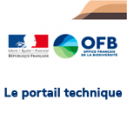Jaguar knowledge programs
To celebrate World Jaguar Day, OFB Guyane is highlighting the work of the Technical Knowledge Unit and its partners in monitoring this big feline.
The jaguar (Panthera onca) is a carnivorous mammal, easily recognized by its spotted yellow coat. Native to Central and South America, it is found in the wild in French Guiana.
Thanks to its role as a super-predator, the jaguar helps to regulate all kinds of species and thus maintain ecosystem functions.
However, due to agriculture, mining and hunting, jaguar populations are declining throughout their range. The reduction in the area of tropical rainforest has led to intensified interactions between man and jaguar, and increased predation on livestock.
Today, it is considered "near-threatened" on the IUCN Red List. Its hunting has been banned in French Guiana since 2011 by a prefectoral decree.
In a context of Guiana's development and wildlife protection, the OFB's Technical Knowledge Unit in Guiana is acquiring data on the ecology and biology of jaguars, by conducting camera trap monitoring at four study sites:
- the Guiana Space Center, a relatively undisturbed area on the Guiana coast;
- a pilot farm on the coast, where jaguars have attacked livestock;
- two national nature reserves: the Mont Grand Matoury National Reserve and the Pararé research station within the Nouragues National Reserve.
OFB is also collaborating with INRAE-UMR EcoFoG, as part of a project called FELIPS (Feline EcoLogy In French Guiana: a Participatory Science approach), to establish a network of feline excrement collectors.
The DNA extracted from these collections provides crucial information on the jaguar population, such as its structure and genetic diversity, individual identification, sex and kinship relationships. This molecular approach also provides information on the jaguar's diet and its interactions with human activities.
These two study approaches, using photographic traps and genetics, will provide global and representative knowledge of the jaguar population in French Guiana. They will enable us to understand their occupation of the territory and their movement corridors, particularly in the context of human-jaguar conflicts, and will thus contribute to the management and conservation of this species.
In parallel, a program to resolve human-jaguar conflicts was developed between 2012 and 2018, thanks to funding from DEAL Guyane and CNES, and is now being taken over by the HISA association. This project resulted in the Guide de coexistence Man-Jaguar, which has been distributed to the Guyanese population.




